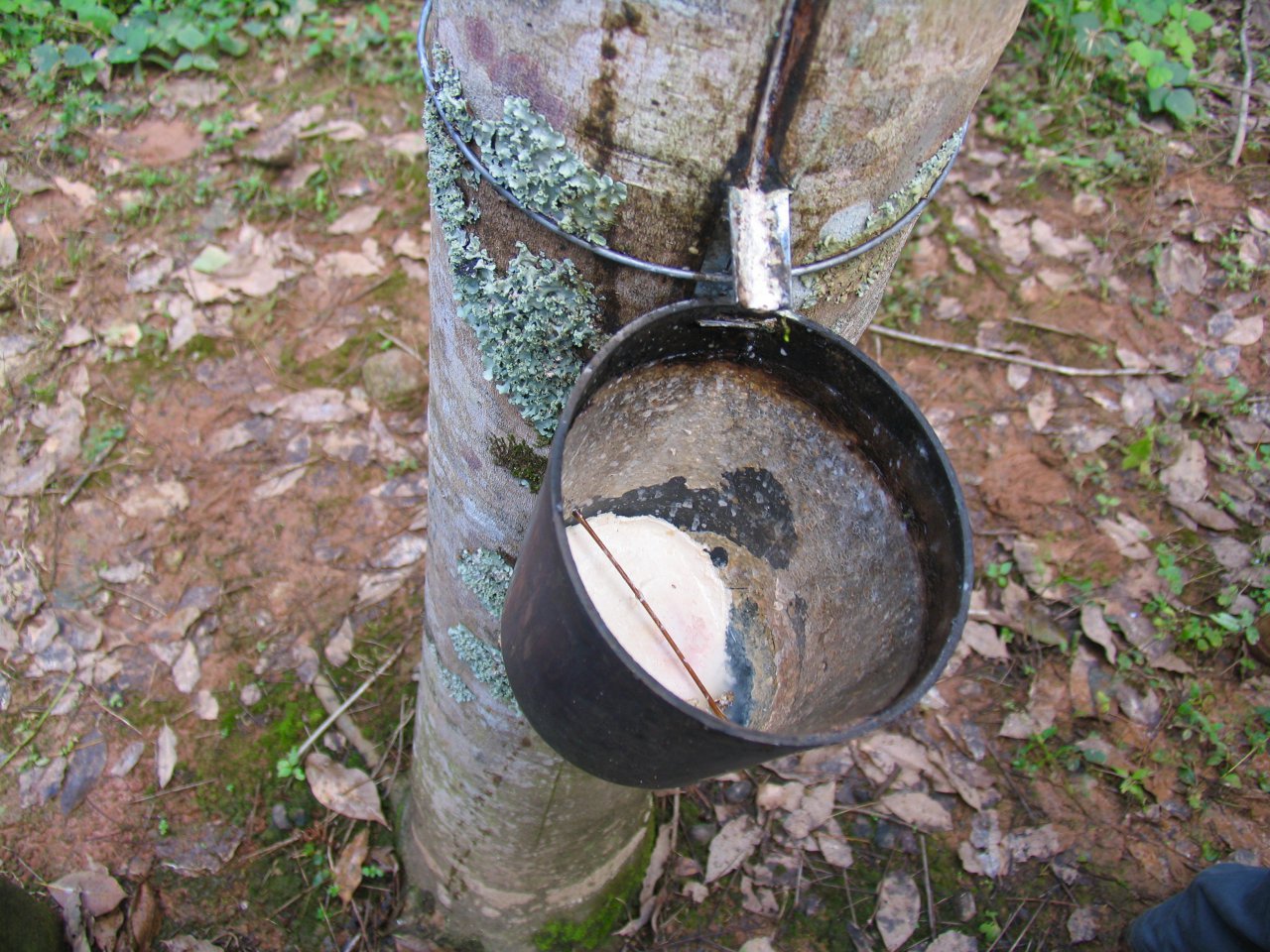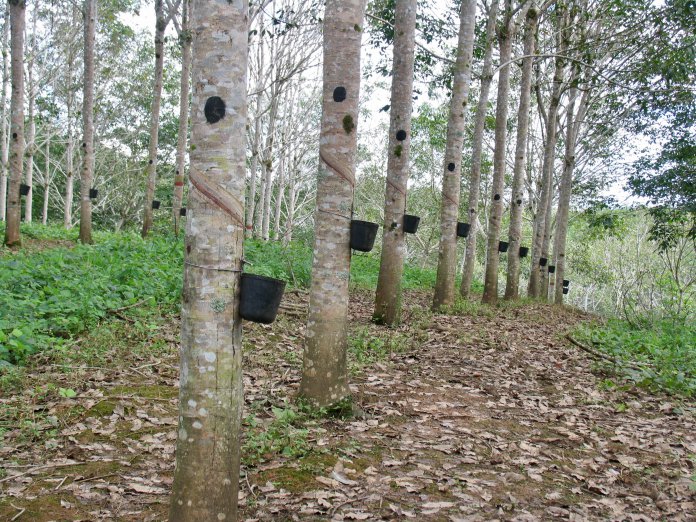Any idea what the first commodity placed under direct U.S. government control might have been during World War II, and this occurred even before the attack at Pearl Harbor?
Steel? Wrong.
Aluminum? Wrong again.
Petroleum? Nope.
Magnesium? Not even close.
It was rubber. In fact, historians tell us that gasoline rationing was instituted not as much to save fuel as to conserve the wear and tear on tires.
Even decades later, when more than 200 ingredients are used in the compounding of tires, a government-funded scientific research report notes, “Natural rubber is a strategic raw material used in enormous amounts in over 40,000 applications. The United States, with no natural-rubber domestic production of its own, is completely dependent upon imports.
“The supply of natural rubber to the United States, which uses over 20 percent of the world supply, is threatened by many factors,” the scientists added. “Over 90 percent of global production is in Southeast Asia. Natural rubber shortages would seriously impact defense, transportation, medicine and consumer markets.
“No other high-performance elastomers can be used successfully in place of natural rubber in many of these applications.”
In addition, they noted that industrial growth in Asia “continues to squeeze supplies and drive up prices.”
Natural rubber cost around 35 cents a pound in 2002 and $2.80 per pound in 2011, according to figures from the Federal Reserve Bank of St. Louis. It was 89 cents at the end of September 2020.
“It’s difficult to think of any other raw material that is as vital and vulnerable,” botanist Wade Davis wrote in One River: Explorations and Discoveries in the Amazon Rain Forest, a book detailing discoveries and developments in perhaps the world’s most biologically diverse and important ecosystem — and the only place on the planet where rubber is indigenous.
Wait! Rubber originally came only from the Amazon forest but now 90 percent of the world’s supply comes from Southeast Asia? Yes, and that story is a tale of intrigue worthy of a Hollywood blockbuster.
You might be wondering if synthetic rubber can’t be a worthy substitute, and increasingly it is used in tire construction. But that wasn’t always the case, and natural rubber remains a major component in tires.
Natural rubber was and is important. As Davis notes, when America’s supply of rubber from Asia was shut off during WW2, our government funded one of the most important “botanical quests” of the 20th Century.

“Engineers had two years,” Davis wrote. “If the synthetic rubber program did not succeed, the nation’s capacity to wage war would end. In fact, he added, “had it not been for the Manhattan Project, the $2 billion investment that created the atomic bomb, the synthetic rubber program would been remembered as the greatest technological breakthrough of the war.”
Even today, the quest for a substitute for natural rubber continues with scientists using “metabolic engineering” as they seek to extract natural rubber from tobacco, sunflowers, guayule, dandelions and other plants that can be grown in the United States.
The problem is that unlike the maple trees that can be tapped for sap that becomes syrup to sweeten your morning pancakes, the hevea species or catoutchouctrees that can be bled of their “white blood,” aka latex, grow only in a more temperate climate than is available anywhere in the United States.
By the way, these real rubber trees look nothing like those sold here in garden centers as decorative “rubber trees.” They more closely resemble aspens and are tall and thin and have light-colored bark. And natural latex is white in color, as were the original tires used on early motorcars.
Not only that, but if you plant a hevea tree today, you have to wait 5 to 7 years for your first tapping. And then it will take a year for that tree to provide enough of its white blood to produce a single tire for a compact car. To put a new set of tires on your full-size sport utility vehicle requires the annual output of at least half a dozen trees.
Although Columbus reported native North Americans playing with balls that bounced, and he protected his sailing instruments in cloth bags painted with the sap of the weeping trees, it wasn’t until the 18th century that French mathematician Charles-Marie de la Condamine actually realized the value of the liquid that would harden yet remain flexible after being exposed to heat.
Brazil was the exclusive supplier of the world’s rubber supply until 1876 when, in a plot of international intrigue, Henry Wickham smuggled 70,000 hevea seeds to the Royal Botanic Gardens at Kew, England. Those seeds were then used to grow trees in Africa and Asia.
In his book, Davis notes that American industrialist Andrew Carnegie lamented investing in steel rather than rubber and that people on both sides of the Atlantic Ocean flipped coins to decide to seek gold in the Klondike or the white gold of Brazil.
Even Henry Ford got in on the act, establishing the short-lived Fordlandia community in the Amazon in an effort to control yet another raw material he needed for his automobile production.
In 1910, Brazil still produced half of the world’s natural rubber supply. When WW2 began, that figure was less than 2 percent. Competition from Asia was one reason, another was a virus —
microcyclus ulei, the dreaded South American leaf blight — that attacked Brazil’s rubber-producing forests.
American biologist James Weir started grafting stems from virus-resistant trees into high-yielding plants in the 1930s and the French government and Michelin sponsored post-war research in virus-resistant trees. The fight against the blight, considered one of the top threats to international agricultural commerce, has been called the agricultural equivalent of the fight against the AIDS virus in people.
Also developed was a change from the old plantation-style of agriculture to a way for local farmers to have a sustainable living that could survive the changes in global rubber prices.
Instead of large tracts of rubber trees susceptible to virus, smaller farm plots were encourage with local farmers not only planting hevea but cultivating banana trees, which produce an almost-immediate crop, as well as cocoa, a bush-like plant that likes the light shade between the rows of the rubber trees and produces the seed pods that are processed into chocolate.
At the same time, Michelin turned a large section of forest it owned into a protected reserve where scientists are doing research — including the discovery of new species — in one of the most biodiverse locations in the world
Not only has the supply of high-quality Brazilian rubber been enhanced, but the local agricultural economy and the realm of scientific knowledge both have been expanded.





